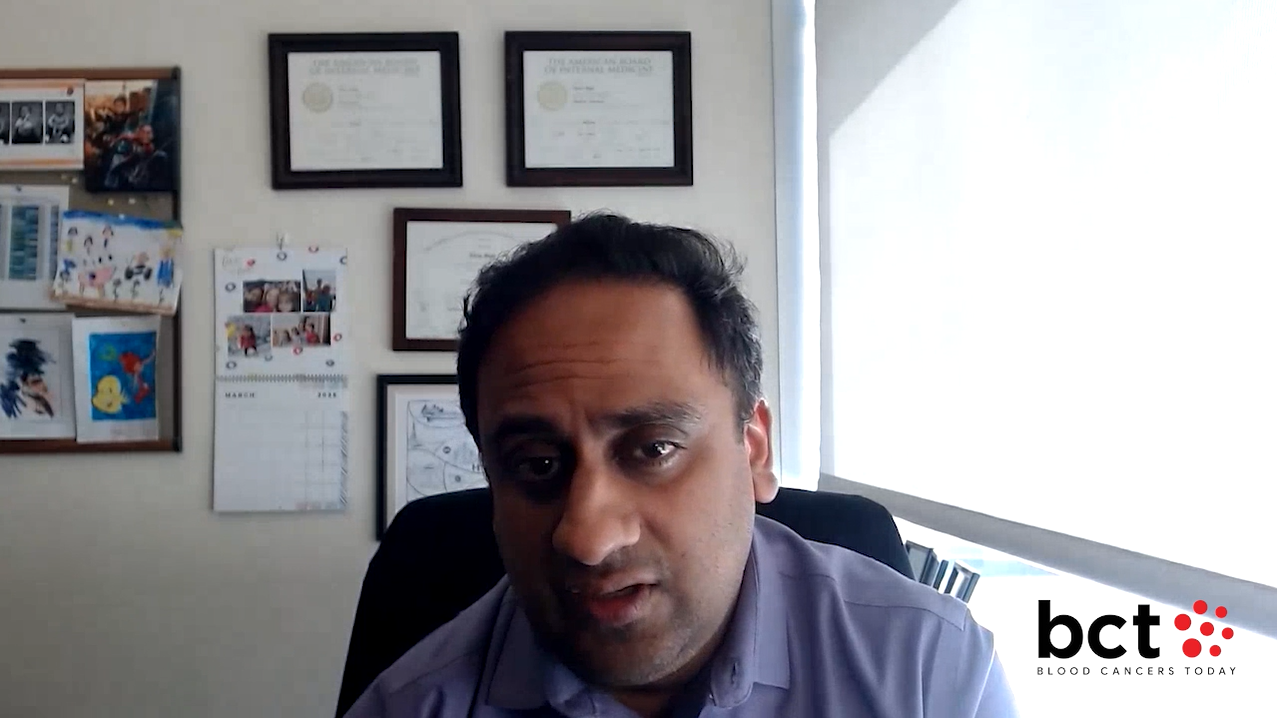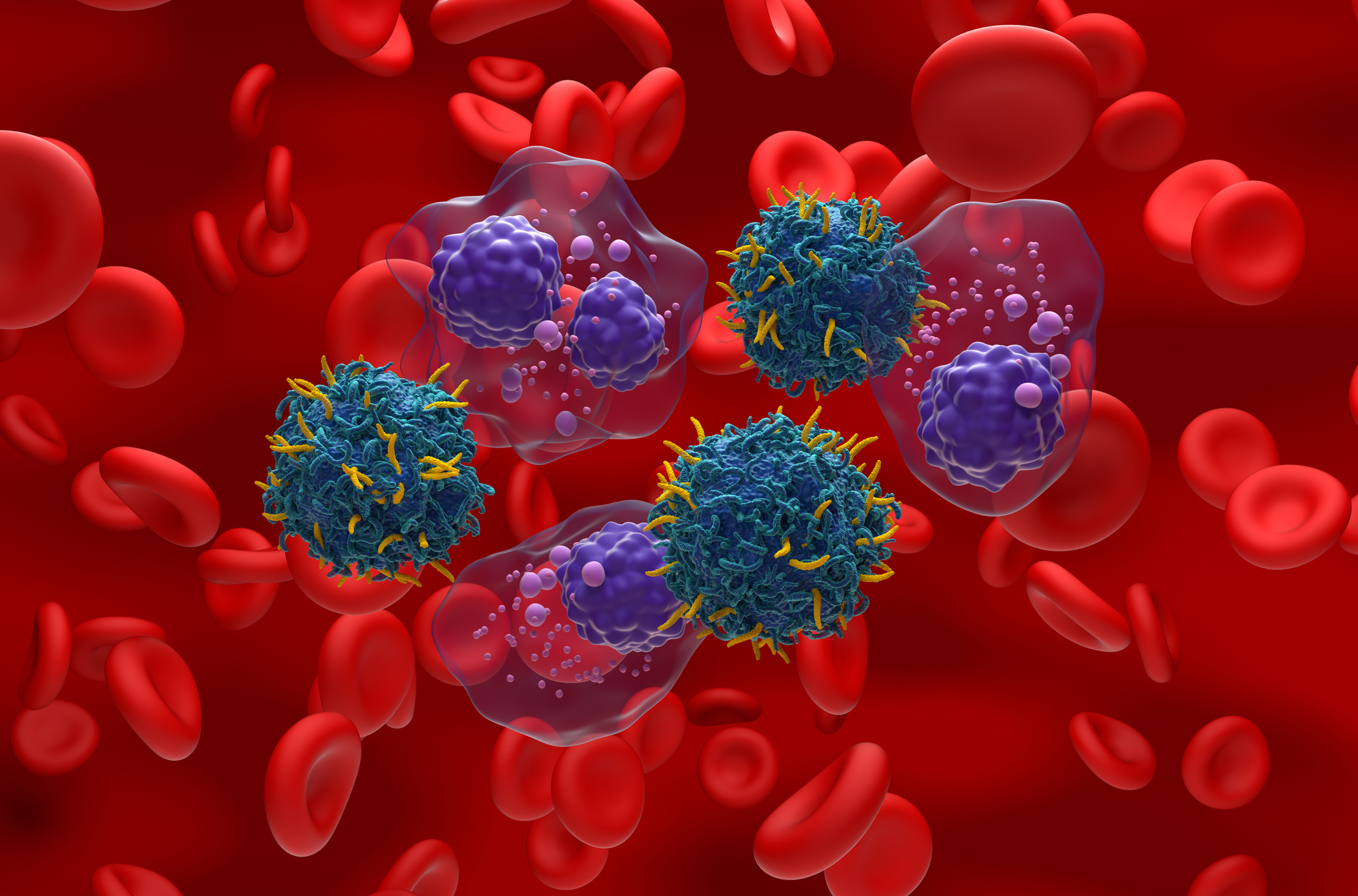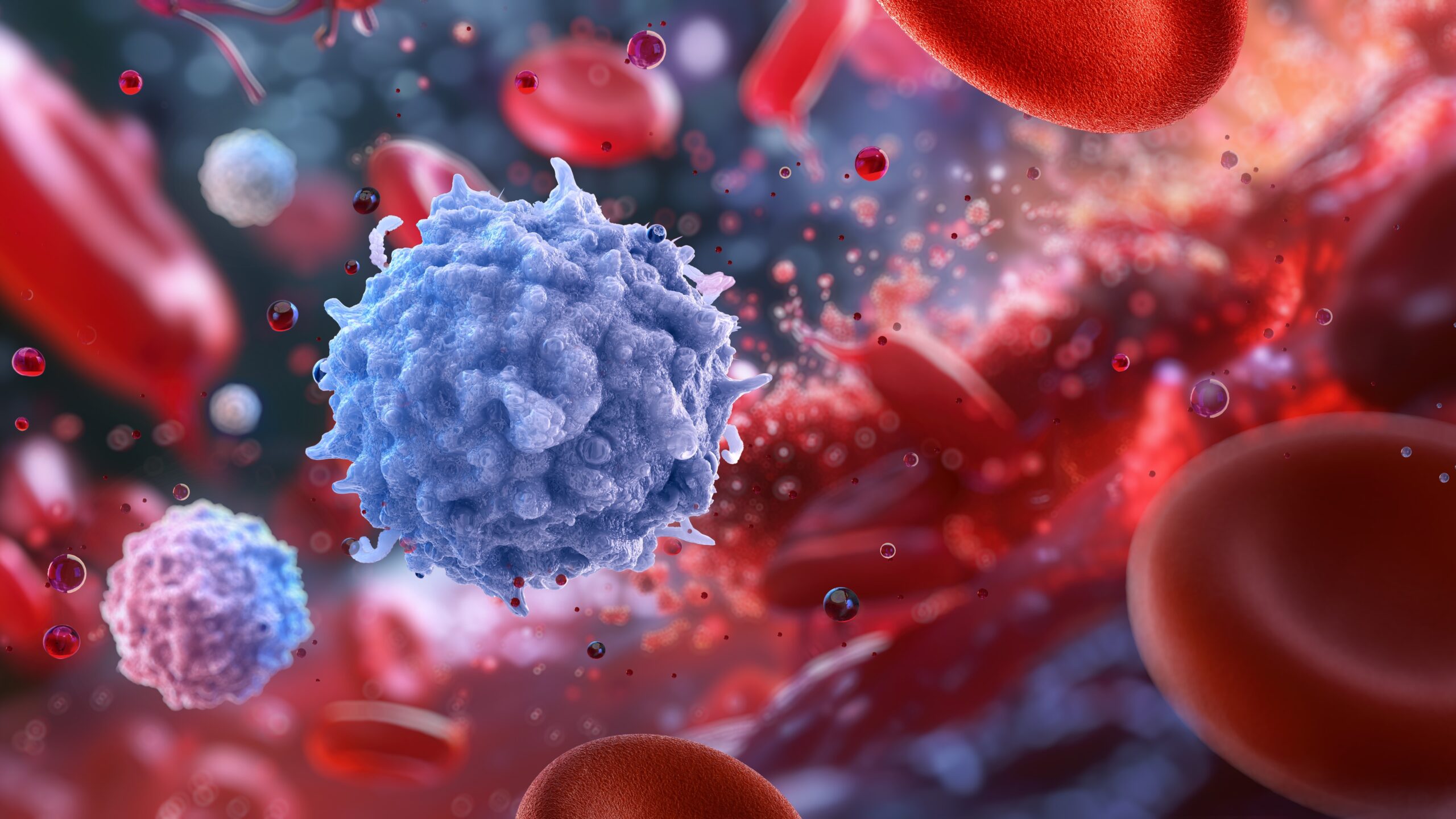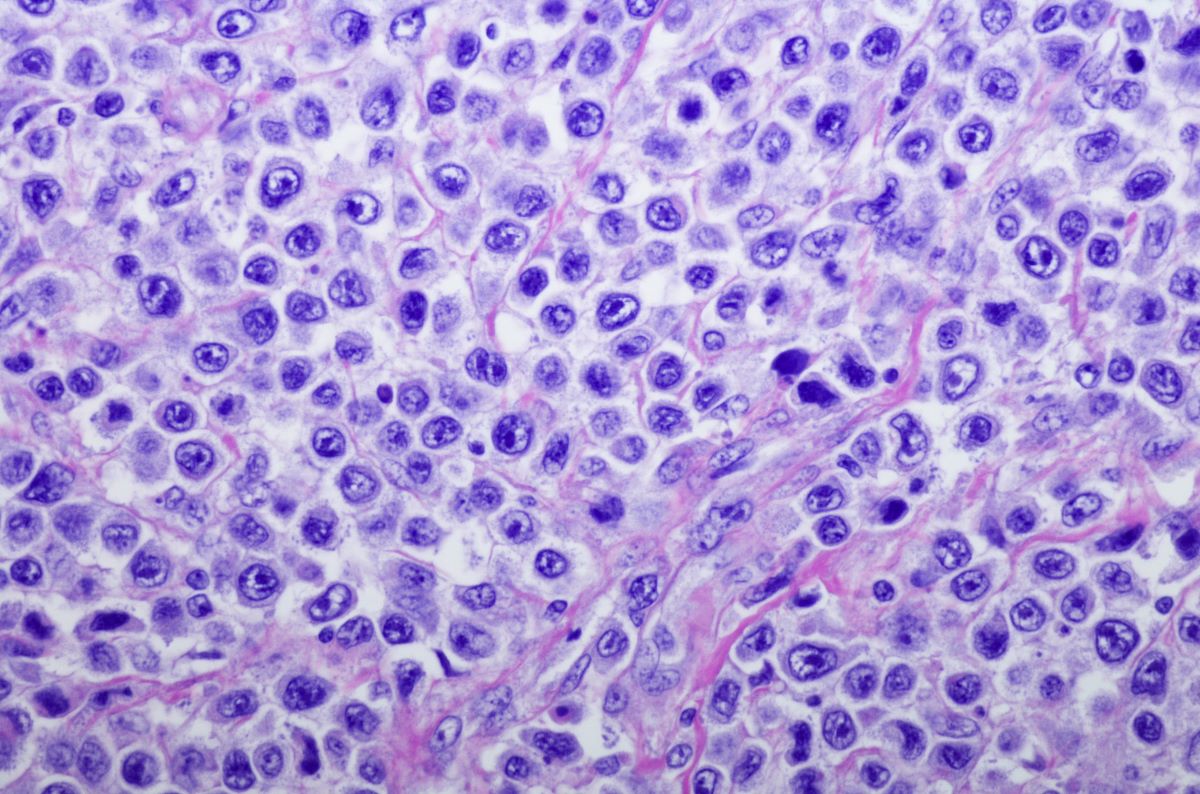
Allogeneic hematopoietic stem cell transplant (allo-HSCT) for patients with blast phase myelofibrosis (BP-MF) showed promising 3-year survival rates, comparable to those in a similar chronic MF population in a retrospective analysis. Graft failure, myeloid donor chimerism less than 95%, and EZH2 and TP53 mutations were associated with worse outcomes after transplant.
Dr. Francesca Valsecchi, ASST Papa Giovanni XXIII, Bergamo, Italy, presented a retrospective analysis of the efficacy of allo-HSCT for participants with BP-MF.1 The study also sought to determine whether specific factors affected the success of allo-HSCT in the BP-MF population.
Twenty-four participants who had received allo-HSCT between 2008 and 2023 were included. Cytogenetic information and pretransplant mutational analysis were available for 22 participants, and spleen length was available for 15 participants. Twenty participants had received pretransplant chemotherapy, and one received hypomethylating agents with venetoclax. The median age at the time of the transplant was 59 years.
At three years after transplant, progression-free survival (PFS) was 49%, and overall survival (OS) was 62%. The cumulative incidence of relapse was 38%, and nonrelapse mortality was 12%. Of 12 evaluable participants, six presented with reductions in spleen size. Participants with complete remission (CR) or CR with incomplete recovery (CRi) before the transplant tended to show better outcomes, with improved OS (hazard ratio [HR], 0.42; P=.16) and PFS (HR, 0.49; P=.21) compared with those without CR or CRi.
EZH2 mutations significantly predicted worse PFS (HR, 3.8; 95% CI, 1.05-13.76; P=.0422), as did TP53 mutations (HR, 6.28; 95 CI, 1.61-24.55; P=.0083). Graft failure emerged as a critical factor for poorer outcomes, associated with worse OS (HR, 3.74; 95% CI, 1.03-13.53; P=.0445) and PFS (HR, 3.76; 95% CI, 1.08–13.01; P=.0367). Similarly, myeloid donor chimerism of less than 95% beyond day 90 was associated with worse OS (HR, 19.6; 95% CI, 1.73-222.27; P=.0163) and PFS (HR, 25.29; 95% CI, 2.24-285.71; P=.009). Compared with a historical cohort of 50 patients with chronic MF, patients with BP-MF had a significantly greater number of SETBP1 (P=.0001) and RUNX1 (P=.0095) mutations. The OS effect of allo-HSCT was similar in blast and chronic phase MF (3-year OS, 62% vs 58%).
Dr. Valsecchi concluded: “Our findings indicate that allo-HSCT may offer a potentially curative treatment for high-risk BP-MF patients.” Results also provide meaningful insight into which populations within BP-MF are most likely to succeed on allo-HSCT.
REFERENCE:
- Valsecchi F, Salmoiraghi S, Stavola R, et al. Effective cytoreductive treatment before allogeneic hematopoietic stem cell transplantation may improve the outcome of patients with blast phase myelofibrosis. Abstract #2192. Presented at the American Society of Hematology Annual Meeting; December 7-10, 2024; San Diego, California.






 © 2025 Mashup Media, LLC, a Formedics Property. All Rights Reserved.
© 2025 Mashup Media, LLC, a Formedics Property. All Rights Reserved.